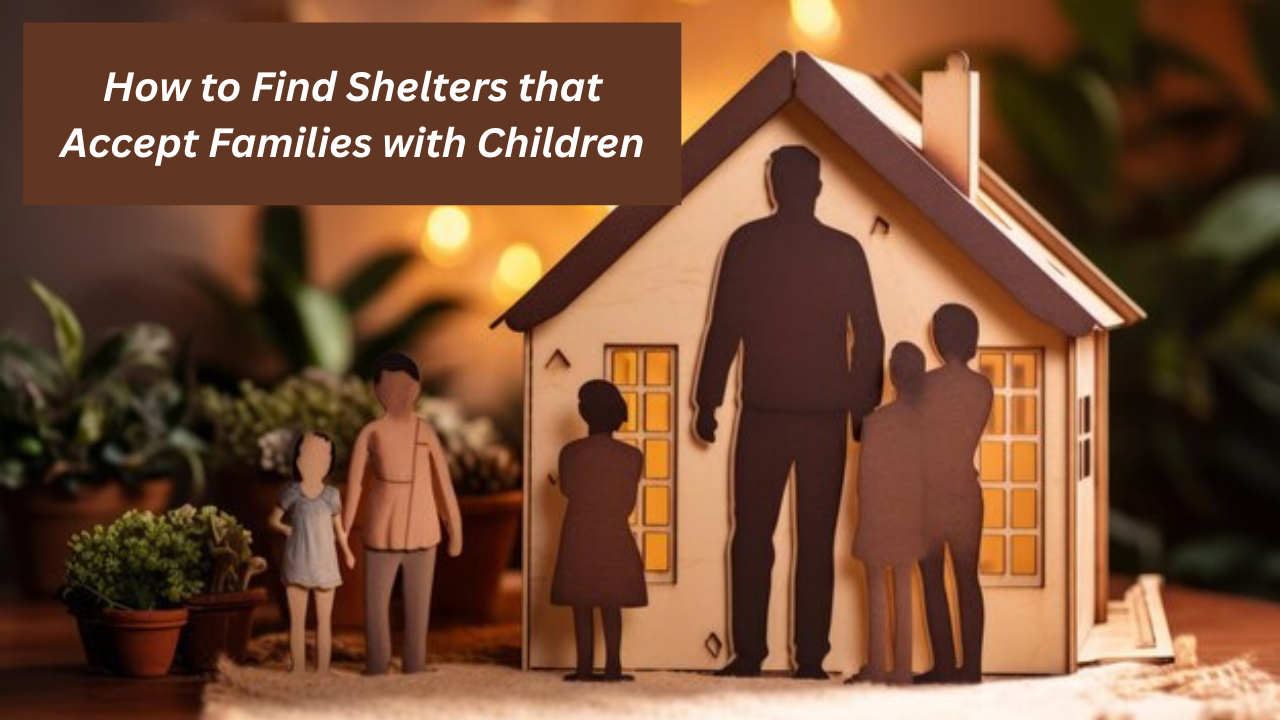Finding safe and welcoming shelter for families with children can be a difficult process, especially when facing financial hardship, eviction, or unforeseen emergencies. Fortunately, many resources and organizations across the United States are dedicated to helping families find stable housing. This guide explains how to locate shelters that accept families with children, what to expect, and how to access additional support.
How to Find Shelters that Accept Families with Children
1. Start with Local Homeless Shelters and Family Shelters
Many cities and counties have shelters specifically for families, offering private or semi-private rooms to ensure their safety and dignity. You can begin your search by contacting:
Local Homeless Shelters: Search online for “family shelters near me” or contact your city’s housing or human services department.
United Way 211 Helpline: Dial 211 from any phone or visit 211.org to connect with trained operators who can locate nearby family shelters, transitional housing programs, and emergency assistance.
Homeless Shelter Directory: Websites such as homelessshelterdirectory.org and shelterlist.com list shelters by state and specify which ones accept families with children.
2. Contact Social Services or Family Assistance Programs
Your local Department of Social Services (DSS) or Human Services Agency can provide referrals to shelters that accept families. They usually maintain updated lists of:
- Emergency shelters for families
- Transitional housing for parents and children
- Programs that prioritize families with children
You can also learn about Temporary Assistance for Needy Families (TANF) or Rapid Relocation programs, which help families move more quickly from shelters to stable housing.
3. Contact nonprofit and faith-based organizations
Many nonprofit and faith-based organizations operate shelters and programs for families. Some of the best-known are:
Salvation Army: Offers family shelters, food assistance, and case management services nationwide. Visit salvationarmyusa.org
Catholic Caritas: Provides emergency housing and family support services in many communities.
Family Promise: Specializes in housing assistance for homeless families with children through community-based programs.
YWCA and Volunteers of America: They offer housing, shelters for victims of domestic violence, and family support programs.
Contact these organizations directly or visit their websites to find programs in your area.
4. Check with local schools and community centers
Public schools are required by law, under the McKinney-Vento Homeless Assistance Act, to assist homeless students. School liaisons can connect families with local shelters and housing resources that accept children.
Community centers, libraries, and local charities may also have resource listings or information about nearby family shelters.
5. Use apps and online shelter finders
Technology makes it easy to find available shelters in real time. Some helpful tools include:
HUD Exchange Homeless Assistance Directory: Lists emergency and transitional housing programs.
Homeless Shelter Directory App: Available for Android and iOS for quick access to nearby family-run shelters.
Google Maps: Searching “family-run shelter near me” or “homeless family shelter” displays local options with reviews and directions.
Eligibility Requirements to get Homeless Shelters
Homeless shelters provide vital support to people experiencing homelessness, offering temporary housing, food, and support services. However, each shelter has its own eligibility requirements to ensure that resources reach those who need them most.
1. Proof of Homelessness or Risk of Homelessness
Most shelters require proof that you are currently homeless or at imminent risk of homelessness. This may include:
- A written notice of eviction or foreclosure.
- A letter from your landlord stating that you must vacate the property.
- A referral from a social worker, case manager, or community outreach worker.
- Verification from a government or nonprofit agency confirming your homelessness.
If you are living in your car, outdoors, or in a place unsuitable for habitation, shelter staff can help you verify your situation.
2. Residency or Location Requirements
Some shelters only accept people who live or have recently lived in a specific city or county. This helps ensure that local resources prioritize local residents.
3. Identification Documents
While not all shelters require identification, having it greatly facilitates the intake process. Acceptable documents include:
- Driver’s license or state ID
- Passport
- Social Security card
- Birth certificate
- Temporary ID issued by a local agency
If you have lost your ID, many shelters can refer you to programs that help replace lost identification documents.
4. Income or Financial Eligibility
While shelters are generally free, some transitional housing or supportive housing programs may request information about your income. You may qualify if you:
- Have no income or very low income (below the federal poverty level).
- Receive public benefits such as TANF, SNAP, or SSI.
- Are you unemployed or working part-time?
This helps programs determine eligibility for additional support, such as rental assistance or job training.
Understand Shelter Policies and Services
Before staying at a homeless shelter, it’s important to understand the policies and services offered. Each shelter operates differently: some offer complete family units with private rooms, while others offer shared spaces or only overnight accommodation. Knowing what to expect can help you prepare, follow the rules, and make the most of available services. Common policies typically cover:
- Check-in and check-out times
- Curfew and quiet hours
- Visitor restrictions
- Rules on substance use and behavior
- Participation in programs or case management
Understanding and accepting these rules ensures a positive stay and can help you qualify for long-term assistance.
Lastly, Find Transitional and Supportive Housing Options
If emergency shelters are full, transitional housing programs can provide long-term stability for families. These programs typically last from a few months to two years and include case management, counseling, and job search support.
Supported housing is another option for families with special needs, such as disability or trauma support. Your local housing authority or nonprofit organizations can advise you on eligibility requirements.
- Hotel Vouchers for Homeless in Greenville SC - November 20, 2025
- Hotel Vouchers for Homeless in Kansas City Missouri - November 18, 2025
- Free Homeless Shelters With Open Beds Near You (Search by Zip Code) - November 17, 2025
